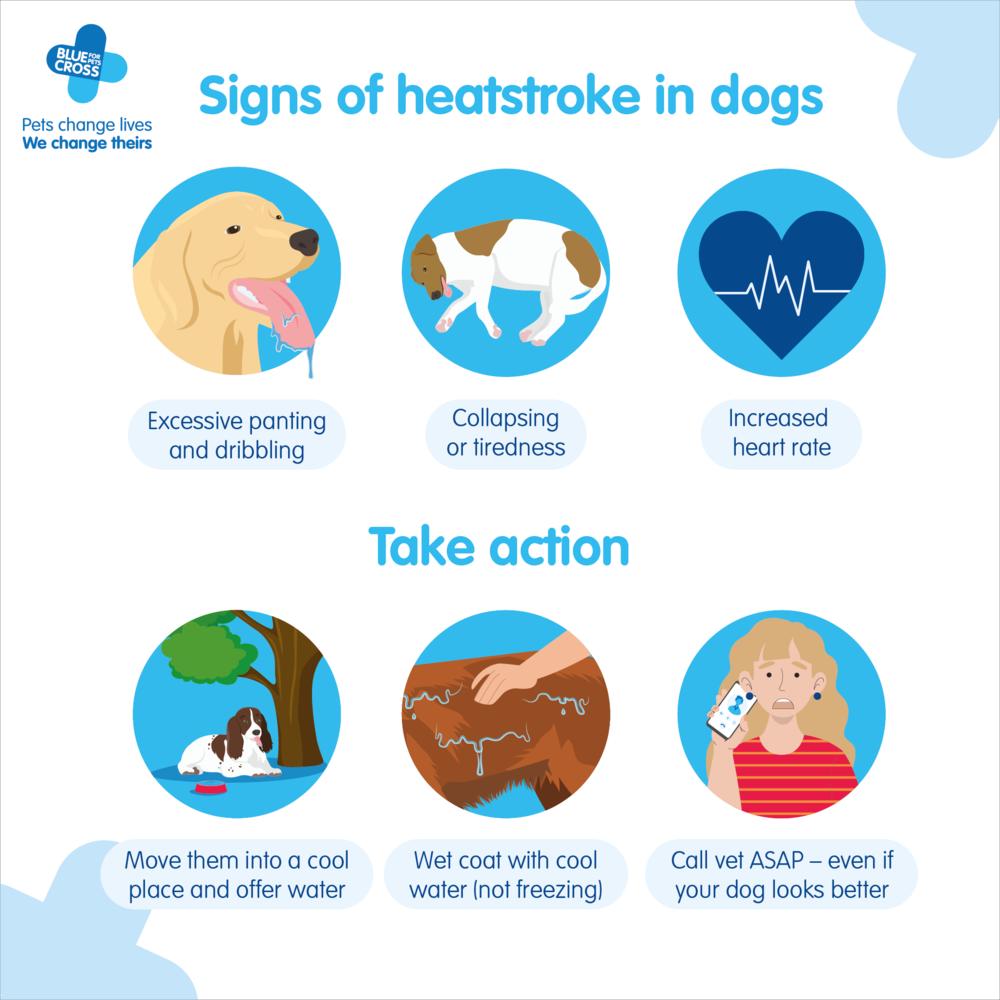Nachricht
So halten Sie Ihren Hund im Sommer kühl

Heatstroke in dogs
Dogs can suffer fatal heatstroke within minutes. Unlike humans, dogs can’t sweat through their skin and so they rely on panting and releasing heat through their paw pads and nose to regulate their body temperature and keep cool. Imagine wearing a thick winter coat on a hot summer’s day and you’ll understand why dogs succumb to heatstroke so easily.
Signs of heatstroke in dogs include collapse, excessive panting, and dribbling.
If you suspect your pet is suffering from the condition, move them to a cool place, preferably with a draught, wet their coat with cool – not freezing – water, and contact your vet immediately.
Once a dog shows signs of heatstroke the damage is often already done, which is why it’s so important to prevent it.
Dogs in hot cars
Dogs succumb to heatstroke quickly. As above, they cannot sweat in the same way that people can and cannot keep cool as easily as we can. A car can become an oven very quickly even when it doesn’t feel that warm. When it is 22°C outside – within an hour – the temperature in a car can reach an unbearable 47°C.
How to keep a dog cool and prevent heatstroke
- Make sure your dog has access to clean water at all times, ideally a large bowl filled to the brim. Carry water and a bowl with you on walks.
- On hot days, walk your dog during the cooler parts of the day, in the early morning and late evening
- During heatwaves, restrict walks to early morning only. On very hot days the temperature is still too hot for dogs in the evening. Remember it is OK not to walk your dog every day during very hot weather – it’s far better to be safe than take unnecessary risks.
- Watch your pet for signs of over-heating, including heavy panting and loss of energy. If you recognise these signs when on a walk, stop, find a shady spot and give your dog water.
- Never leave your dog (or any pet) alone in a car, even with the windows open
- Make cooling tasty treats by making ice cubes with your dog’s favourite food inside or stuff a Kong and pop it in the freezer
- Be particularly careful with short nosed dogs such as bull breeds, boxers, pugs, older dogs and puppies, and those that are overweight. These dogs can quickly get heatstroke in high temperatures, even on a leisurely stroll.

Exercising in the summer
Walking
- Walk your dog at the cooler times of the day, either first thing in the morning or late evening
- Dogs’ paw pads can burn on hot pavements. As a general rule, if it’s too hot for your hand it’s too hot for their paws.
- If it’s too hot for the usual long walk, keep your dog mentally stimulated by doing some brain games instead. Refresh their basic training with some sits and stays, or teach them new tricks.
Swimming
- Swimming is excellent exercise for dogs and a great exercise alternative to walking in the summer heat. But remember that not all dogs like to swim, so if yours doesn’t then don’t force them and never throw a dog into water.
- Be wary of tides at the beach
- Drinking salt water is likely to make your dog sick and isn’t very good for them. Bring fresh water with you to the beach.
- Wash salt and sand off your dog’s coat after swimming to prevent it drying and irritating their skin
- Be careful to avoid heatstroke on the beach
- Watch out for currents in rivers
- Check freshwater lakes, rivers, ponds and canals to make sure they are clean before letting your dog dive in. Some types of algae, including blue-green algae, are toxic to dogs. If your dog swims in algae-contaminated water, contact your vet immediately.
- Dogs can and do drown in rivers and the sea. If your dog has inhaled water, contact your vet, as they can suffer complications.
- Sadly, each year dog owners drown trying to rescue their pets. Don’t risk dangerous situations.
Check out our posts to find Hundefreundliche Strände in Spanien
Summer skin and coat
Pale-coloured dogs are vulnerable to sunburn, particularly on their ears, noses and sparsely haired areas. Sun damage can lead to skin cancer which may require extensive surgery – even amputation in severe cases. Sunlight can also make existing skin conditions worse, particularly if your dog has allergies.
The best prevention is to keep your dog indoors when the sun is strongest, between 11.00am and 3.00pm. Alternatively, pop a T-shirt on your dog and cover vulnerable areas to protect them. You can also apply a non-toxic waterproof human sunblock or one specifically made for pets. If your dog’s skin looks sore, crusty or scaly, call your vet.
Take care of your dog’s delicate paws. If the pavement is too hot for your hand, it’s too hot for their paw pads too. Instead, walk your dog at cooler times of the day to prevent their paws burning.
Grooming your dog is important in the summer months, especially for longhaired breeds, to get rid of matts and tangles. A tangle-free coat will protect your pet’s delicate skin and help to keep them cool. Plus, if your pet’s coat is dirty and matted then you run the risk of flies laying their eggs and becoming maggots. Some breeds may need their coats trimming to keep them comfortable. Ask a professional groomer for advice.
If your dog swims or paddles in the sea to keep cool, remember to rinse the salt water and sand from your dog’s coat after to avoid drying out and irritating their skin.
source: Blue Cross
